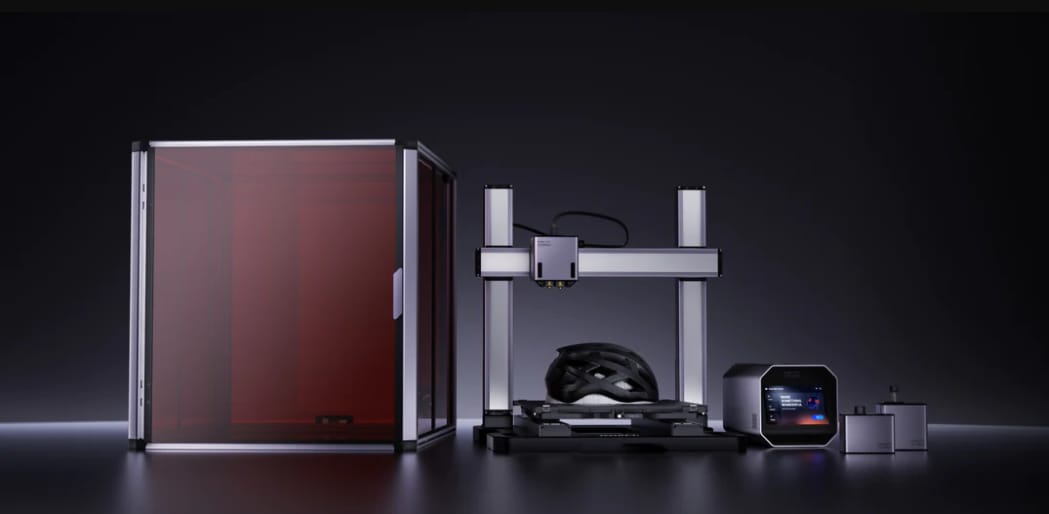Feeling left in the dark about load capacitance? Fear not! Our ultimate guide is here to shed light on this important aspect of electronic devices. No matter if you’re an engineer or tech enthusiast, understanding load capacitance is key for maximum performance. Join us as we unpack this mystery and become an expert in no time!
Why is Load Capacitance Important for Electronic Devices?
Load capacitance, often overlooked in the realm of electronics, plays an important role in determining the stability and performance of electronic circuits. Signal integrity, important for electronic communication, relies on load capacitance to ensure accurate signal transmission, preventing distortion. Beyond that, load capacitance significantly impacts power consumption.
Designers can optimize power efficiency by selecting the appropriate load capacitance, leading to extended battery life for portable devices and reduced energy consumption in larger systems. Additionally, load capacitance influences the timing, dictating the speed of signal travel and enabling precise synchronization within electronic circuits.
In essence, load capacitance serves as the guardian of signal integrity, the optimizer of power efficiency, and the conductor of accurate timing in electronic devices. Neglecting this parameter during design and optimization may result in performance hiccups. So, the next time your gadget works seamlessly, acknowledge the often unnoticed hero–load capacitance!
Factors Affecting Load Capacitance
Load capacitance, an important parameter in electronic devices, is influenced by various factors that impact performance and stability. Here are key considerations:
- Circuit Board Layout: The physical arrangement of components and traces on the circuit board significantly affects load capacitance. The size, placement, and routing of traces contribute to the overall capacitance, requiring careful consideration during the design phase.
- Temperature Variations: Capacitance values can change with temperature fluctuations. To ensure consistent device operation across different environments, it is essential to choose capacitors with stable temperature coefficients.
- Parasitic Effects: Stray capacitances and inductances, considered parasitic effects, can introduce noise or instability into a circuit. Proper component selection and layout techniques are important for minimizing these unwanted elements.
- Operating Frequency: The frequency at which a device operates influences its load capacitance requirements. Higher frequencies may necessitate smaller capacitor values, while lower frequencies might require larger ones. Matching the capacitive value with the operating frequency ensures efficient energy transfer within the system.
- Power Supply Impedance: Variations in power supply voltage levels, resulting from changes in current demand, can impact load capacitance. Managing power supply impedance is important to maintaining stable device behavior.
- Component Characteristics: The type and characteristics of capacitors used in the circuit play an important role. Factors such as capacitor material, dielectric type, and construction influence the overall load capacitance.
- Signal Integrity Requirements: The need for signal integrity in high-speed applications can influence load capacitance considerations. Minimizing capacitive effects that could degrade signal quality is essential for reliable performance.
- Environmental Conditions: External factors, such as humidity and atmospheric conditions, can affect the properties of certain capacitors and impact load capacitance. Choosing capacitors with suitable environmental ratings is important.
Understanding and addressing these factors are integral to designing electronic devices with optimal load capacitance, ensuring reliability and performance across a range of operating conditions.
How to Calculate Load Capacitance
Calculating load capacitance is like the secret sauce for designing electronic devices, ensuring optimal operation and steering clear of signal hiccups or instability. Here’s the recipe:
- Pin down the required frequency response based on factors like data rate or bandwidth.
- Identify the output impedance of your driver circuit and note any stray capacitance.
- Now, the math magic begins! Employ formulas like Miller’s theorem or simple RC circuits to figure out the extra capacitance needed for your desired frequency response.
- Factor in parasitic capacitance, environmental conditions, and any existing capacitors in your system.
- Enter simulation tools for a visual feast, letting you see how different load capacitance values affect performance.
Accuracy is key for your electronics to dance to the right tune. Double-check your calculations, consult references if needed, and only then lock in your design. Mastering the art of calculating load capacitance ensures you can fine-tune performance, guaranteeing stability and reliability in electronic devices. Now, that’s some electrifying knowledge!
Techniques for Optimizing Load Capacitance in Electronic Devices
Elevating the performance of electronic devices is like fine-tuning a symphony, and optimizing load capacitance is the conductor’s baton. Here are some engaging techniques that add harmony to the mix:
1. Selection of the Right Capacitor
It’s like casting the perfect actor for a role. Choosing a capacitor with the right characteristics—voltage rating, tolerance, and temperature stability—sets the stage for optimal performance.
2. Matching Impedances
Think of it as a dance where partners move in sync. Matching impedances between different components ensures smooth coordination, minimizing signal reflections, and enhancing the overall efficiency of the system.
3. Minimizing Parasitic Effects
Imagine unwanted guests at a party—stray capacitance and inductance. They can cause quite a ruckus in the world of load capacitance. But fear not! Careful layout design and strategic component placement act as the bouncers, keeping parasitic effects in check for improved accuracy and reliability.
4. Proper PCB Layout
Picture it as designing the blueprint for a city. A well-organized PCB layout is the key. Implementing ground rules—literally—like proper grounding techniques, avoiding lengthy traces or vias, and reducing signal loop areas, helps minimize parasitics and unleashes peak performance.
5. Simulation Tools
Enter the realm of virtual rehearsals. Simulation tools, like the SPICE orchestra conductor, allow you to fine-tune and adjust load capacitance values before the grand performance—fabrication. It’s like perfecting the composition before it hits the big stage.
In conclusion, optimizing load capacitance requires a comprehensive approach, including capacitor selection, impedance matching, minimizing parasitic effects, ensuring proper PCB layout, and utilizing simulation tools when necessary. By effectively implementing these techniques and considering specific device requirements, designers can achieve improved performance and maximize device efficiency.
Troubleshooting Common Issues with Load Capacitance
To troubleshoot load capacitance challenges in electronic devices effectively, focus on common issues:
Improper Charging
- Suboptimal device performance or failure may stem from inadequate or improper charging of the load capacitor. Prioritize establishing a proper charging mechanism to ensure device reliability.
Excessive Noise/Interference
- Load capacitance-induced excessive noise can degrade signals, impacting device functionality. Actively identify potential sources of electromagnetic interference (EMI) and take decisive steps to mitigate them for a noise-free operation.
Incorrect Calculation/Selection
- Various issues can arise from miscalculating or selecting the wrong load capacitance value. A too-high value may lead to slow response times, while a too-low value could cause instability. Emphasize precise calculation and thoughtful selection to address these concerns.
To effectively tackle these issues, engineers must possess a thorough understanding of load capacitance and its impact on electronic devices. Conducting detailed analyses of circuit designs, performing accurate calculations, and considering factors like operating frequency and power requirements are essential steps to optimize load capacitance for peak performance.
In conclusion, troubleshooting load capacitance issues demands meticulous analysis and active problem-solving. Addressing concerns related to charging, interference, and value selection ensures electronic devices are optimized for stability, efficiency, and reliability. With these troubleshooting techniques, engineers can confidently navigate challenges related to capacitive loads.




